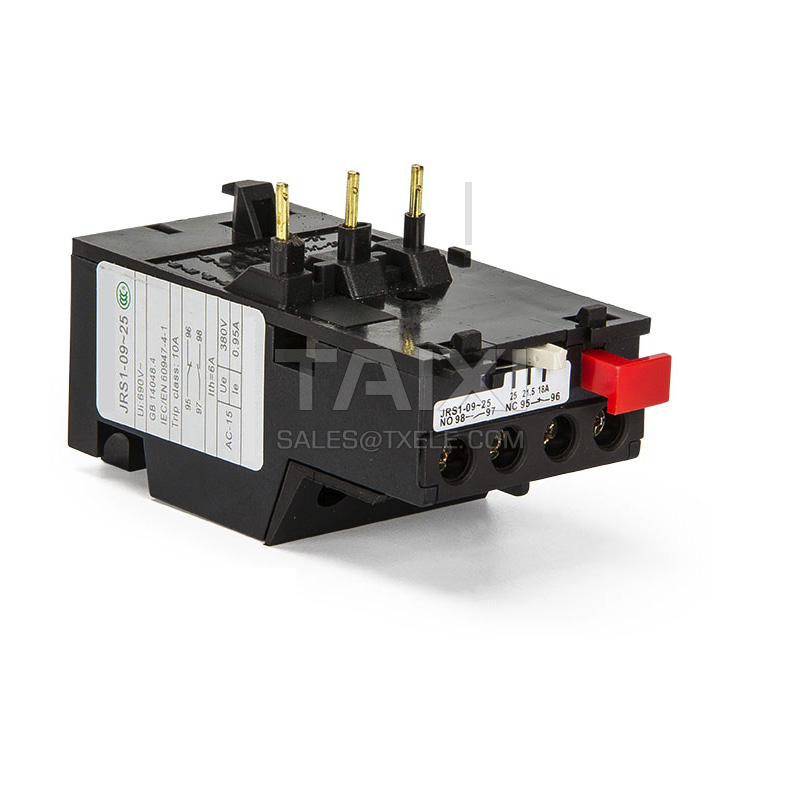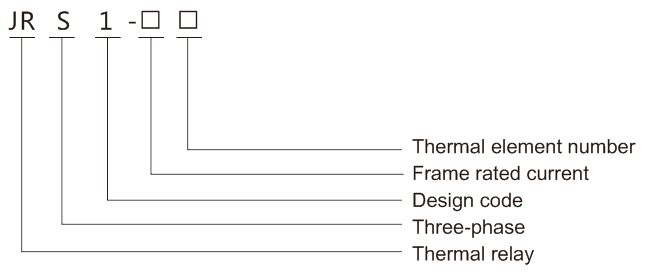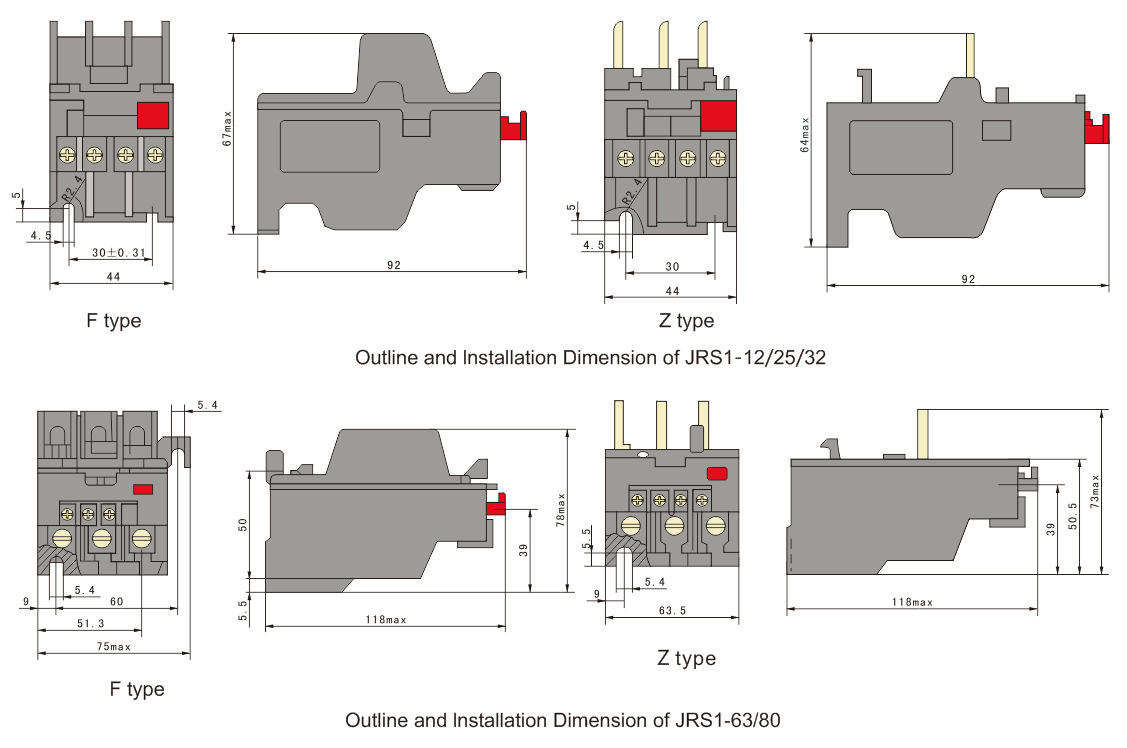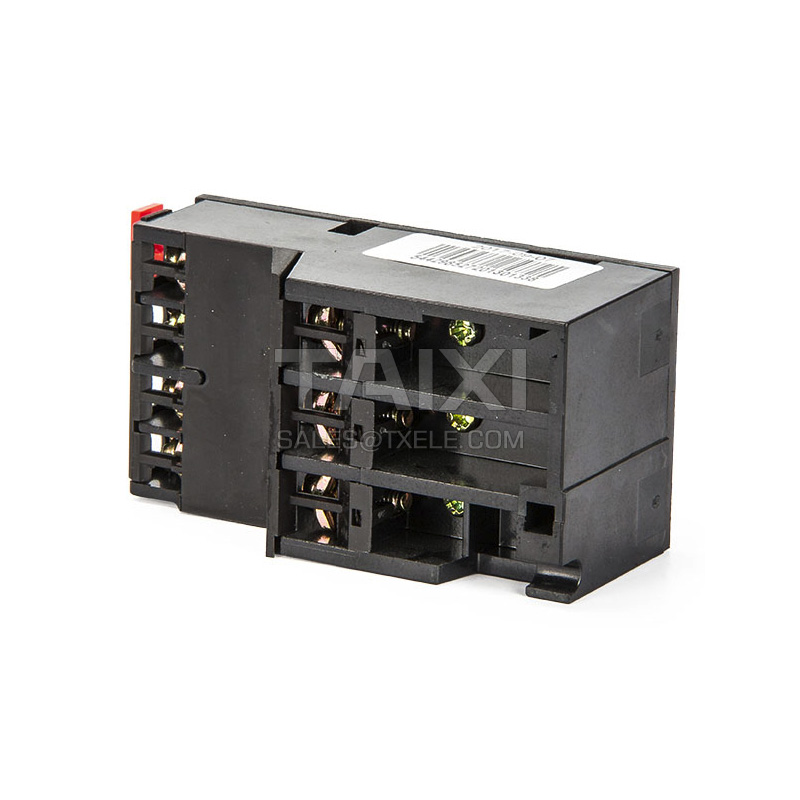


Parameters
Details
Size&weight
Related
Video
Message
Scope of Application
JRS1 Thermal Overload Relay is suitable for the circuits with rated voltage up to 690V, rated current 83A, AC 50Hz, for overload and phase-failure protection of AC motor. The relay has the differential mechanism and temperature compensation and can plug in CJX2 series AC contactor. The product conforms to GB14048.4 stardand.
Model and Meaning

Normal working conditions and installation conditions
Ambient temperature: -5℃~+40℃, the average value does not exceed +35°C in 24 hours.
Altitude: no more than 2000m.
Atmospheric conditions: The relative humidity does not exceed 50% at +40°C, and higher relative humidity may be allowed at lower temperatures. For example, 90% at 20°C, special measures should be taken for the occasional condensation due to temperature changes.
Pollution level: 3 levels.
Installation category: Class III.
Installation conditions: The inclination of the installation face and the vertical is not more than ±5°.
In addition to mounting screws, the relay can also use 35mm standard rail.
Shock vibration: The relay should be installed and used in places where there is no significant shaking, shock and vibration.
Transportation, Storage: The relay should not be subject to severe impact and vibration during transportation, and it must not be affected by rain or snow in transportation and storage. Relays are suitable for transport and storage at -25°C ~ +55°C, and at +70°C for short periods (in 24h).
Altitude: no more than 2000m.
Atmospheric conditions: The relative humidity does not exceed 50% at +40°C, and higher relative humidity may be allowed at lower temperatures. For example, 90% at 20°C, special measures should be taken for the occasional condensation due to temperature changes.
Pollution level: 3 levels.
Installation category: Class III.
Installation conditions: The inclination of the installation face and the vertical is not more than ±5°.
In addition to mounting screws, the relay can also use 35mm standard rail.
Shock vibration: The relay should be installed and used in places where there is no significant shaking, shock and vibration.
Transportation, Storage: The relay should not be subject to severe impact and vibration during transportation, and it must not be affected by rain or snow in transportation and storage. Relays are suitable for transport and storage at -25°C ~ +55°C, and at +70°C for short periods (in 24h).
Structure Feature
Insert combination type (Z) can be derived into independent type (F).
a. Z combination type can be directly connected with CJX2 series AC contactor;
b. F independent type has all terminals.
With phase failure and temperature compensation structure;
The product has reasonable structure, reliable operation and safe operation and use.
Installation operation
Setting current is continuously adjustable.
With manual reset, action indication function.
Normally closed and normally open auxiliary contacts are insulated and separated.
4. With the stop device.
5. Wiring of insert combination type installation or independent type installation.
a. Z combination type can be directly connected with CJX2 series AC contactor;
b. F independent type has all terminals.
With phase failure and temperature compensation structure;
The product has reasonable structure, reliable operation and safe operation and use.
Installation operation
Setting current is continuously adjustable.
With manual reset, action indication function.
Normally closed and normally open auxiliary contacts are insulated and separated.
4. With the stop device.
5. Wiring of insert combination type installation or independent type installation.
Main Technical Parameters
Rated current and setting range of thermal element
Note: JRS1-80 is only discrete installation typeAuxiliary circuit parameters
Protection characteristics of JRS1 thermal relay
Outline and Installation Dimension

view and download
| File name(Click to view) | File type | file size | View times | Click to download |
Product related news
| News title | Promulgator | Release time | View times | Click to read |



